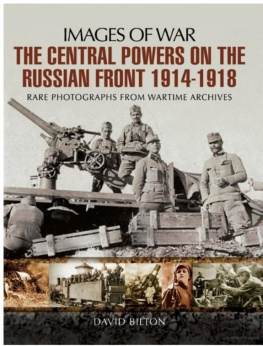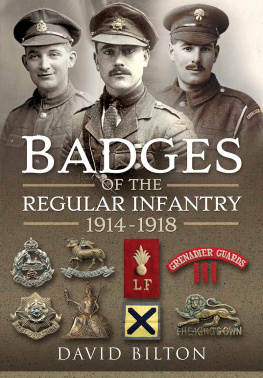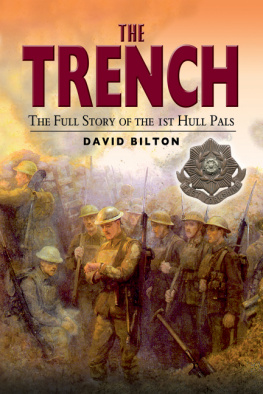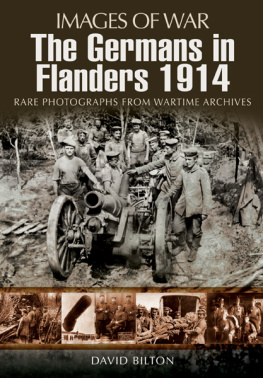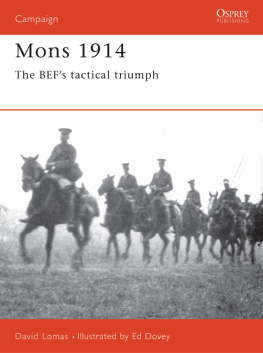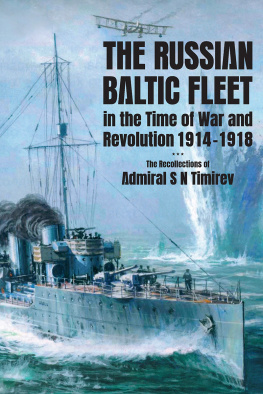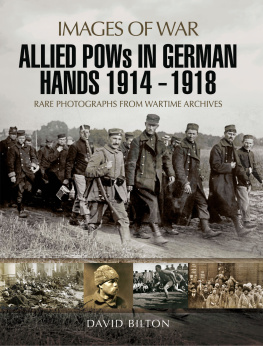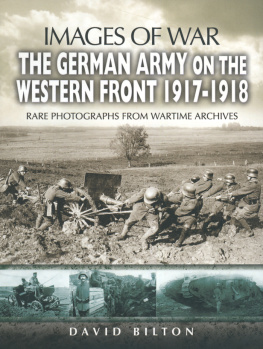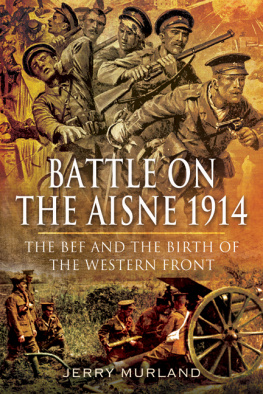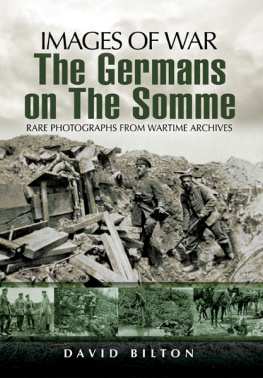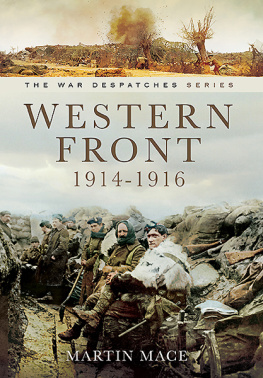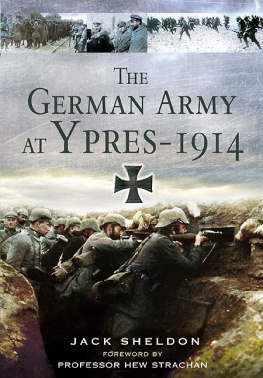First published in Great Britain in 2014 by
PEN & SWORD MILITARY
an imprint of
Pen & Sword Books Ltd,
47 Church Street,
Barnsley,
South Yorkshire,
S70 2AS
Copyright David Bilton, 2014.
A CIP record for this book is available from the British Library.
PAPERBACK ISBN: 978 1 78340 053 9
PDF ISBN: 978 1 47383 629 7
EPUB ISBN: 978 1 47383 453 8
PRC ISBN: 978 1 47383 541 2
The right of David Bilton to be identified as Author of this Work
has been asserted by him in accordance with the Copyright,
Designs and Patents Act 1988.
All rights reserved. No part of this book may be reproduced or
transmitted in any form or by any means, electronic or mechanical
including photocopying, recording or by any information storage and
retrieval system, without permission from the Publisher in writing.
Printed and bound by CPI UK
Pen & Sword Books Ltd incorporates the Imprints of
Pen & Sword Aviation, Pen & Sword Maritime,
Pen & Sword Military, Wharncliffe Local History, Pen & Sword Select,
Pen & Sword Military Classics and Leo Cooper.
For a complete list of Pen & Sword titles please contact
Pen & Sword Books Limited
47 Church Street, Barnsley, South Yorkshire, S70 2AS, England
E-mail:
Website: www.pen-and-sword.co.uk
Contents
Acknowledgements
As with previous books, a great big thank you to Anne Coulson for her help in checking the text and to The Prince Consorts Library for all their help.
Errors of omission or commission are mine alone.
Introduction
This book covers the fighting and very briefly, where relevant, the politics and economics of the war in Russia. In such a slender photographic tome it is not possible to cover every event, even in the timeline. Therefore the main focus is on the Habsburg and Hohenzollern Empires troops in Russia. The photographs used in this book come from a private collection and texts published at the time.
The size, complexity, contradictions of success and the sheer confusion of the fighting on the Russian Front are clearly shown by the following extracts, all from one month in 1915: Varying fortunes on rest of front. Fall of Grodno. Russians re-enter Grodno. Russians retreat towards Minsk. Germans retire in Rovno region. German advance comes to a standstill nearly all along line, though Russians still retiring slowly. Scattered fighting along most of the line, except Dvinsk. And with losses running into the tens of thousands who could tell if they were really winning at any given moment?
Pre-war plans had been formulated round the offensive, so the fighting of August was based on great offensives: pre-war illusions in which the defensive was ignored. It was a war of movement that would be over by Christmas. The German plan was based upon a slow Russian mobilisation which gave them a window of opportunity to beat the French before turning on the Russians.
The fighting soon turned into siege warfare on the Western Front, with offensive manoeuvre only returning in 1918. In the East the situation remained more fluid. Fighting a war of movement, often over long distances, there was little time for the development of a trench system as complex as those on the Western Front. Many positions were therefore temporary, as the fighting usually centred around communications hubs like highway crossings, forts and railway stations. In fact, some areas did have intricate trench systems like those on the Western Front, but in the majority of sectors they were temporary. But the essential reasons for the eastern fronts remaining for so long a place of manoeuvre, not of Stellungskrieg, were the lower defensive fire-power and the lesser mobility of reserves than in the west.
An Englishman, John Morse, serving with the Russian Army in 1914 commented on the difference between the eastern and western trenches. The Allies and the German trenches are said to often be within a few yards of each other, this was seldom the case in the East. There was generally a considerable space between the two lines: here near Skyermevice it amounted to 3,000 yards. One reason he believed to be a cause of this difference was the extreme hardness of the earth, which made it impossible to dig fresh trenches during the winter-time. There were similarities between the west and east. One was the German fear of franc-tireurs, and the punishment they received, as at Louvain (Leuven) in Belgium, which was sacked and burned because of supposed franc-tireur activity. Harsh reprisals also happened in Poland. Kalisch on the Silesian border was shelled into oblivion on 14 August after snipers had supposedly fired on German troops. The population were also fined 27,000 roubles for the offence. The Russians began a policy of forcible russification as they advanced into Galicia, driving Jews from their homes and forcibly converting churches to Orthodoxy.
A further similarity was the refugee, although in greater numbers in the east. It is estimated that there were 3.5 million refugees moving into central Russia by 1915, as many as 7.4 million by July 1917. Many moved as a result of Austro-German offensives, but others were forcibly deported by the Russians, particularly ethnic Germans and Jews.
Unlike in the west, cavalry had a role to play and was regularly used to exploit situations and attack on its own. Cossacks and German cavalry alike behaved both bravely and badly, with both sides burning villages and slaying villagers in a tit-for-tat way.
Another difference with the west was in communications. In the east the side that moved the fastest usually had the advantage and generally that advantage was won by the efficient and effective German staff system.
Although small in number, a very important difference between Russia and all other fighting powers was the Russian use of women in war. Between 5,000 and 6,000 women had been enlisted for combat by November 1917. The best known unit was the so-called Battalion of Death (Zenski batal Smerti) raised by the Provisional Government and led by Maria Botchkareva, known as Yashka, a butchers daughter whose husband had been killed at the front.
As well as enormously long distances, so also were the numbers involved huge. Calling-up the 1914 class would provide a Russian army of over seven million, with a general staff, alone among all the major combatants in having had experience of fighting a modern war the Russo-Japanese war, though one which it had lost. Although rich in men, it was lacking in equipment and incapable of maintaining even a fraction of its potential strength as a fully functioning force under the conditions of modern warfare.
The situation was similar in the Austro-Hungarian Army. It was under-equipped and lacking in guns at all levels. As in the Russian Army, there were not even enough rifles. They could not produce rifles fast enough to equip the empires rapidly expanding armed forces and handle its battlefield attrition. This resulted in the use of obsolete types, captured equipment and cancelled foreign gun orders: a quartermasters nightmare for parts and ammunition types.
Another combatant in poor shape for a war was the Ottoman Empire which was unwilling to enter the war until November its army was incapable of combat operations until December 1914. Unlike the German Schlieffen Plan, the French Plan Seventeen and the Russian double Plan A and G, it had no clearly defined war aims, nor did peacetime Turkish war plans in 1914 call for any offensive operations against neighbouring countries. While the other combatants had cheered the decision for war, there was no enthusiasm in Turkey. For the Turks, 1914 was not a year of cheering crowds sending off troop trains of patriotic soldiers to the front. Instead, 1914 was a year of respite and recovery from the disastrous Balkan Wars of 1912 and 1913.
Next page
